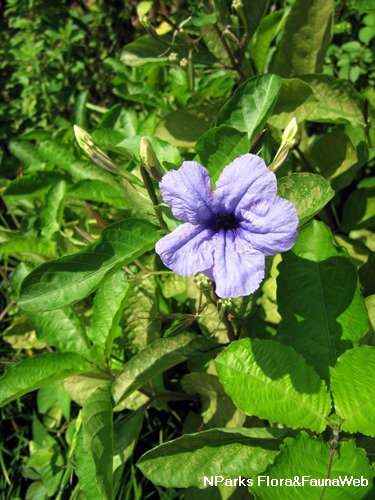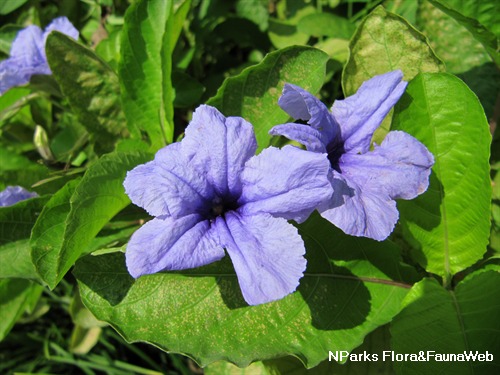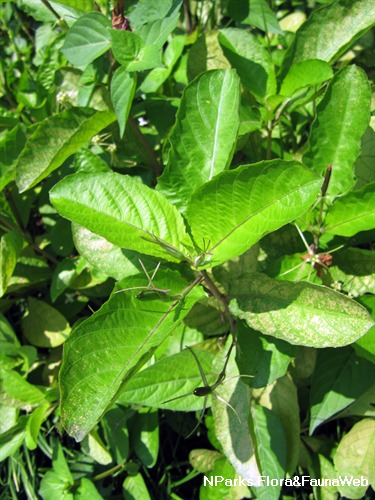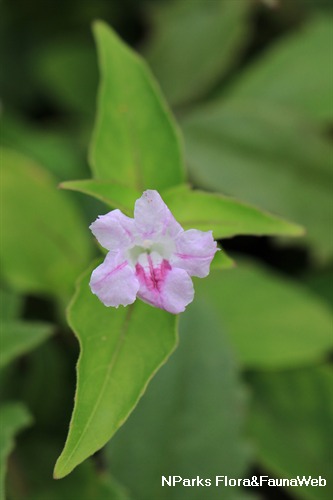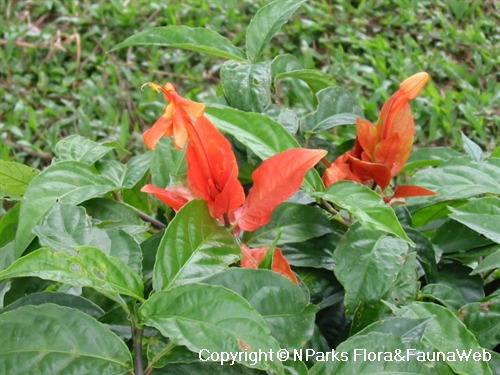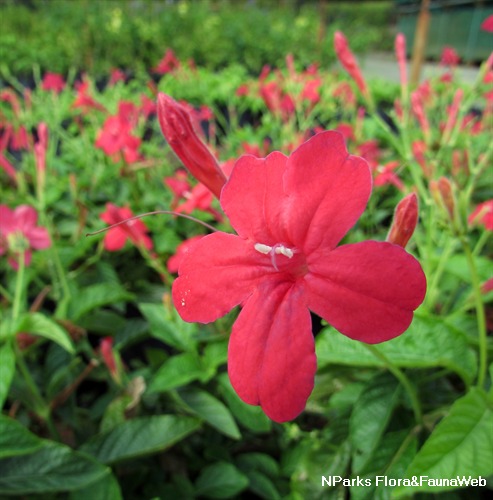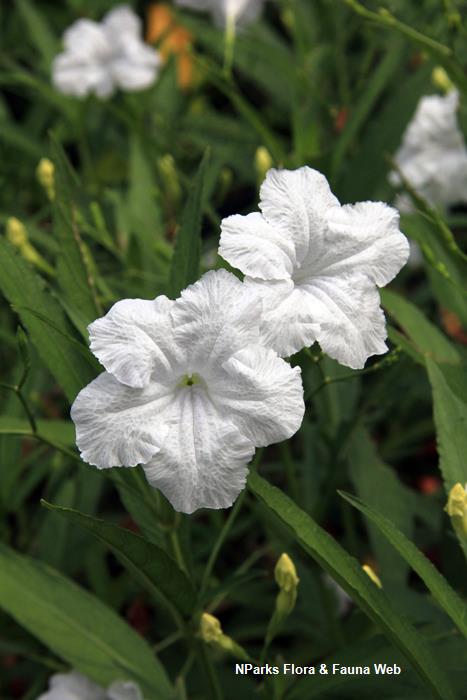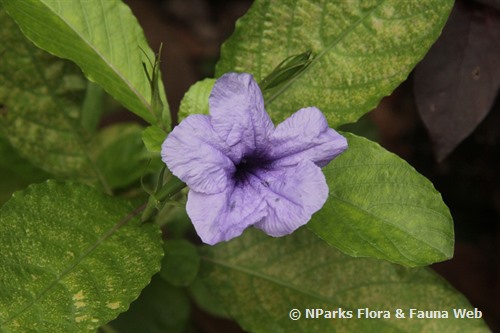
Back
Ruellia tuberosa
| Family Name: | Acanthaceae |
| Common Name: | Meadow Weed, Minnieroot, Cracker Plant, Popping Pod, Waterkanon, 芦莉草 |
Name
Classifications and Characteristics
| Plant Division | Angiosperms (Flowering Seed Plants) (Dicotyledon) |
|---|---|
| Plant Growth Form | Herbaceous Plant |
| Lifespan (in Singapore) | Perennial |
| Mode of Nutrition | Autotrophic |
| Plant Shape | Shrubby |
Biogeography
| Native Distribution | Central & South America |
|---|---|
| Native Habitat | Terrestrial |
| Preferred Climate Zone | Tropical |
| Local Conservation Status | Non-native (Spontaneous (Naturalised)) |
Description and Ethnobotany
| Growth Form | Perennial herb with erect stems up to 45 cm tall. |
|---|---|
| Roots | The tuberous roots are thick and cylindrical, finger-like. |
| Foliage | Leaves are oblong-obovate and hairless on both sides (4-8 cm long, 1.5-4.2 cm wide). Leaf margin is undulate to approximately entire (smooth edges). Leaves are arranged oppositely along the stem. |
| Stems | Stems are 4-sided, and hairy. |
| Flowers | Pale blue to purple, trumpet-shaped flowers are 2.2 to 5.5 cm wide with 5 approximately round, overlapping lobes (1.6 cm long, 1.5 cm wide). |
| Fruit | Dry dehiscent fruits are known as capsules (1.8-2.5 cm long, 0.3-0.4 cm wide). Dark brown, cylindrical pods are pointed at the tip and hairless except for glandular trichomes at the tip. When a mature pod becomes wet, it opens with explosive dehiscence, catapulting the 7-8 disk-shaped seeds into the air. |
| Habitat | Found in disturbed sites, waste areas. |
| Cultivation | Grow on moist, well-drained soil, with moderate watering under full sun. |
| Etymology | Genus Ruellia is named after John de la Ruelle of Soissons, who is the author of De natura plantarum (1536). The epcific epithet tuberosa is from the Latin tuberosus, meaning swollen or tuberous. |
Landscaping Features
| Desirable Plant Features | Ornamental Flowers |
|---|---|
| Landscape Uses | General, Parks & Gardens, Small Gardens, Flowerbed / Border, Container Planting |
Plant Care and Propagation
| Light Preference | Full Sun |
|---|---|
| Water Preference | Moderate Water |
| Rootzone Tolerance | Moist Soils, Well-Drained Soils |
Foliar
| Foliage Retention | Evergreen |
|---|---|
| Mature Foliage Colour(s) | Green |
| Prominent Young Flush Colour(s) | Green |
| Foliar Type | Simple / Unifoliate |
| Foliar Arrangement Along Stem | Opposite |
| Foliar Attachment to Stem | Petiolate |
| Foliar Shape(s) | Non-Palm Foliage (Elliptical, Oblong) |
| Foliar Venation | Pinnate / Net |
| Foliar Margin | Entire, Entire - Wavy / Undulate |
| Foliar Apex - Tip | Acute |
| Foliar Base | Cuneate |
| Leaf Area Index (LAI) for Green Plot Ratio | 4.5 (Shrub & Groundcover - Dicot) |
Floral (Angiosperm)
| Flower & Plant Sexuality | Bisexual Flowers |
| Flower Colour(s) | Purple |
|---|---|
| Flower Texture(s) | Smooth |
| Flower Grouping | Cluster / Inflorescence |
| Flower Location | Terminal |
| Flower Symmetry | Radial |
| Individual Flower Shape | Trumpet-shaped |
| Flowering Period | Free-Flowering |
Image Repository
Others
| Master ID | 1111 |
|---|---|
| Species ID | 2404 |
| Flora Disclaimer | The information in this website has been compiled from reliable sources, such as reference works on medicinal plants. It is not a substitute for medical advice or treatment and NParks does not purport to provide any medical advice. Readers should always consult his/her physician before using or consuming a plant for medicinal purposes. |


